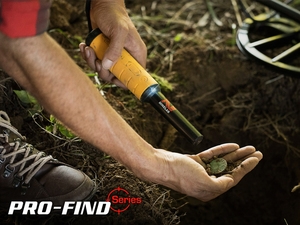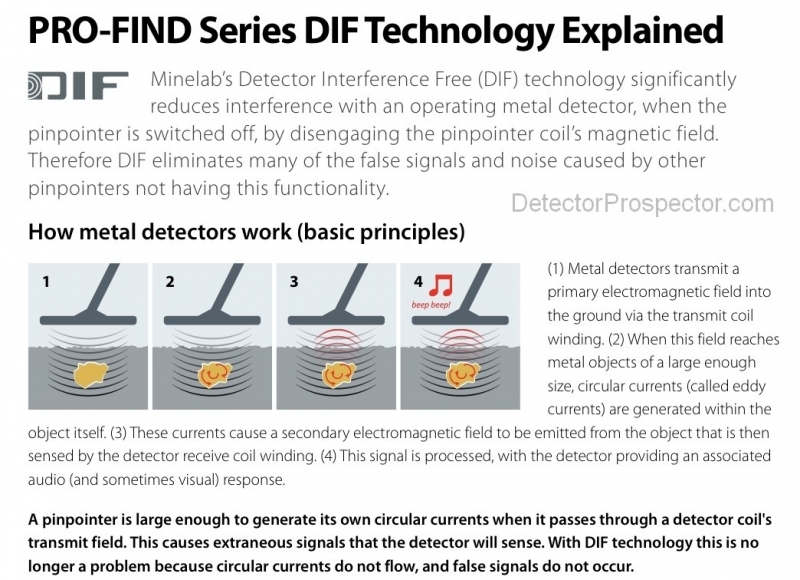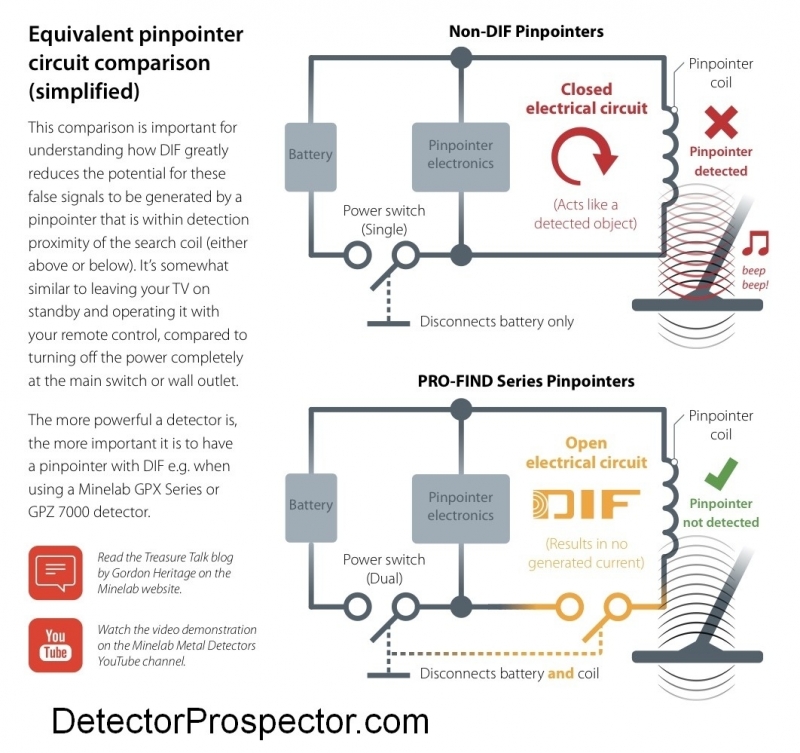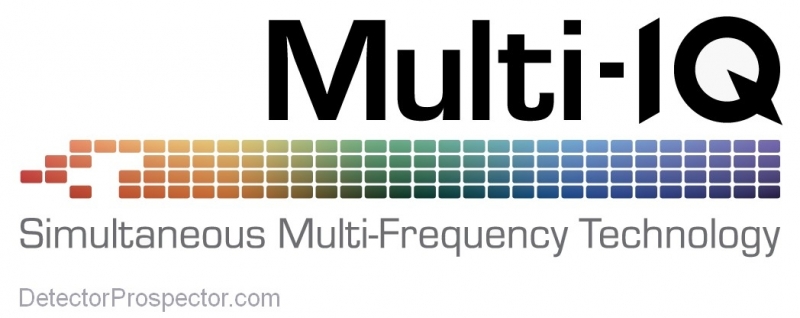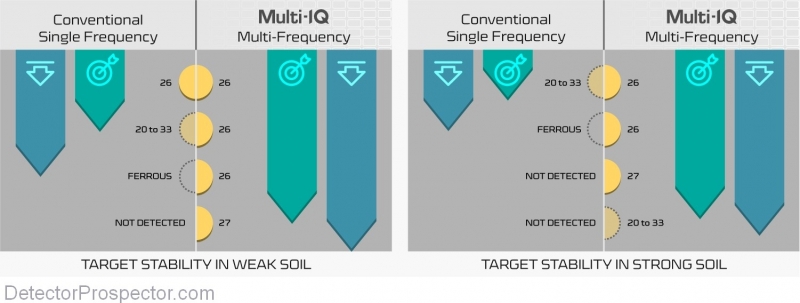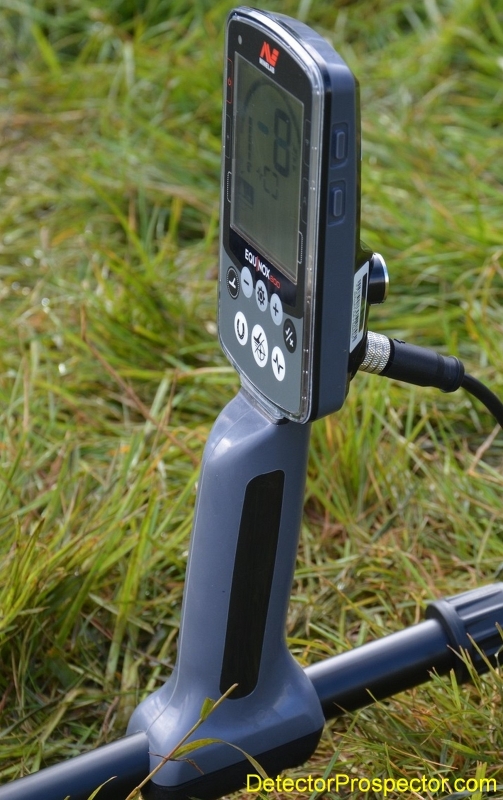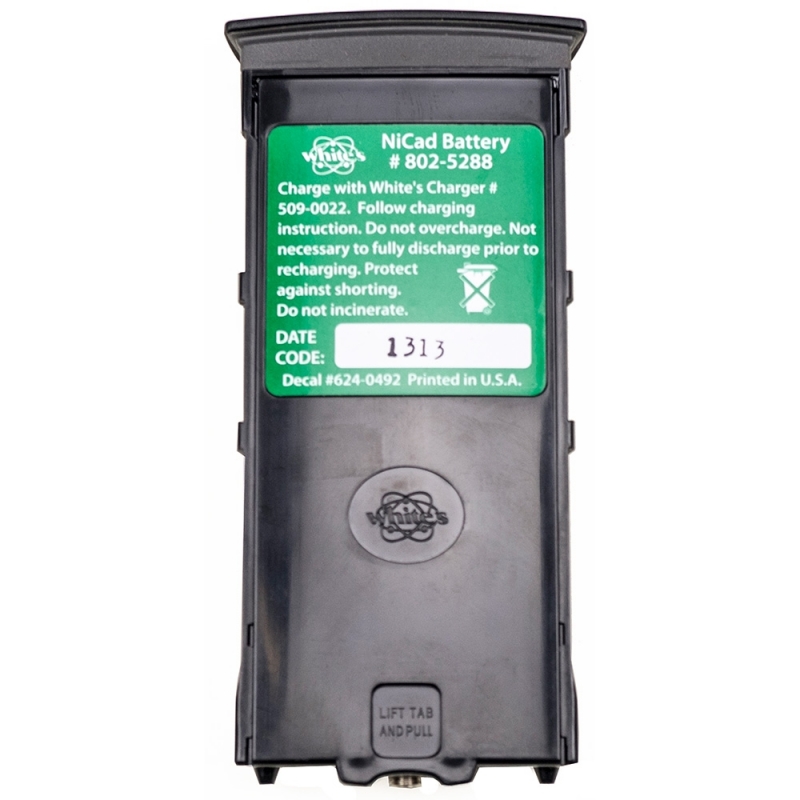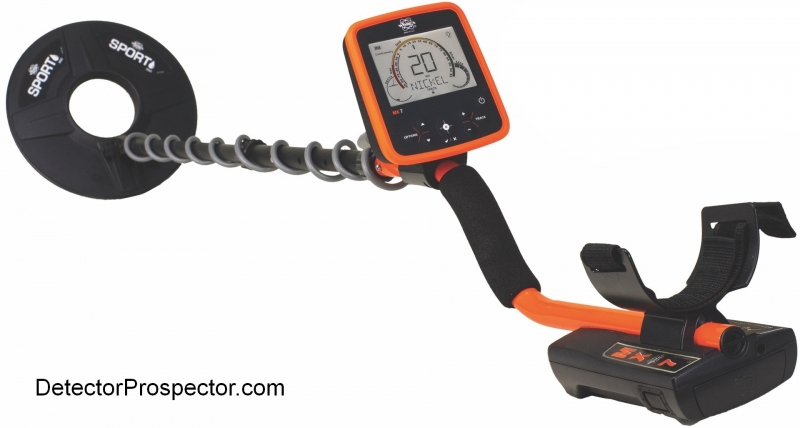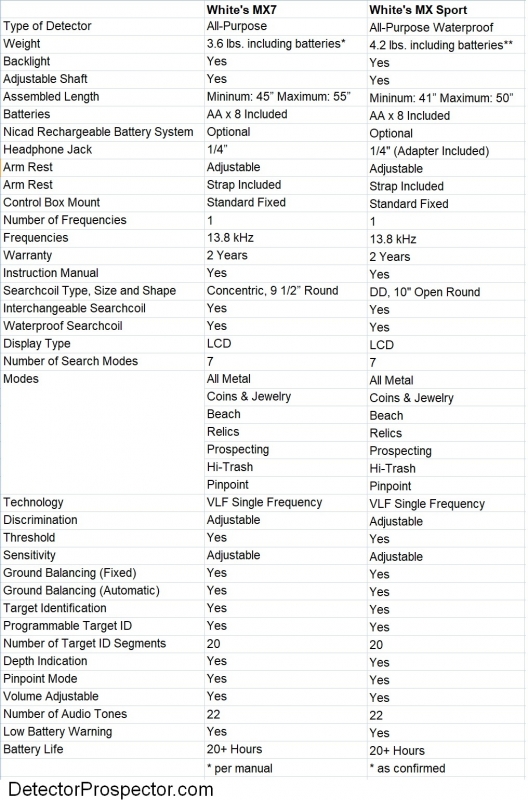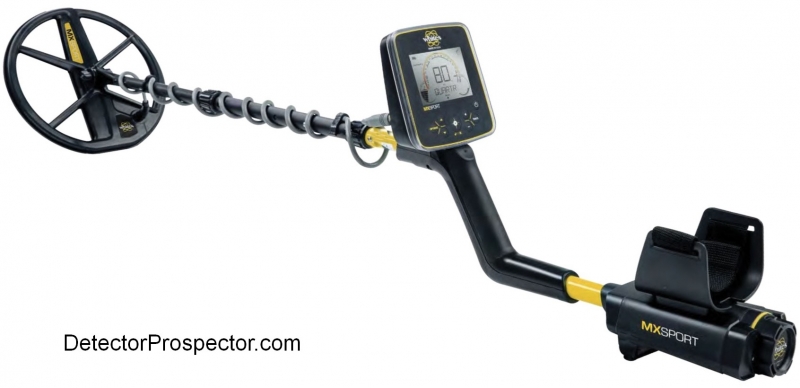-
Posts
19,790 -
Joined
Content Type
Forums
Detector Prospector Home
Detector Database
Downloads
Everything posted by Steve Herschbach
-

Gold Detecting A Hundred Years From Now
Steve Herschbach replied to Ridge Runner's topic in Detector Prospector Forum
We talk about the "old-timers" but in 100 years we will be the old-timers. There will be footnotes about the "Electronic Gold Rush" of the late 20th and early 21st century - and we will be the ones that had a part of all that. Making history with every nugget dug! -
Minelab is pleased to announce that the new PRO-FIND Series will be available for purchase from November 13th, 2017 onwards. *Initial availability may be limited in some regions. Please contact your local dealer for specific price and availability information. PRO-FIND Series pinpointers feature Minelab’s Detector Interference Free (DIF) technology. DIF significantly reduces interference with an operating metal detector, when the pinpointer is switched off, by disengaging the pinpointer coil’s magnetic field. Read the Treasure Talk Blog "PRO-FIND and DIF Technology" by Gordon Heritage here. More blogs to follow soon. Watch the DIF technology test video here: The above information derived from https://www.minelab.com/customer-care/product-notices?article=322187 and http://www.minelab.com/__files/f/310895/KBA_28-1 DIF Technology EN.pdf
-
I especially like the ammonite Bob - thanks for sharing!
-

Minelab Equinox Where Are You?
Steve Herschbach replied to Ridge Runner's topic in Minelab Equinox Forum
Yup, Gold Monster was same thing and no doubt will make them more cautious this time around. Best bet is stay busy detecting! -

Minelab Equinox Where Are You?
Steve Herschbach replied to Ridge Runner's topic in Minelab Equinox Forum
Maybe they don't have a date to give you. If they do offer one, maybe something will happen that causes it to be wrong, and then like with Garrett AT Max everyone is unhappy that the date got missed. There is not much benefit in putting out firm dates until finished machines are literally rolling off the production line. -
Very interesting! I never thought about the implications of the probe having to use whatever mode the detector is in - or the need to possibly change the mode in use. I know a lot of people swear by the Sun Ray probes (especially Minelab users) and I used to sell them, but never used one myself. It was always just more gear hanging on the detector than I wanted to deal with plus the fact they are only good for use on compatible detectors. The idea of having discrimination while probing is compelling but as you note the need to move the probe to get a disc reading negates that somewhat, especially if used in tight quarters, like a narrow hole. I was also not aware the probes were not being made anymore, but a look at the Sun Ray website reveals that to be the case. A few dealers do appear to still have them however, which is no surprise since when I sold them they were a slow mover. Probably a victim finally of all the great new pinpointers hitting the market these days. Another good thing to know - thanks for the post!
-
Yeah, I always wondered about battery heated gloves. Might be just the ticket. Rechargeable and good for several hours. If you just used the detector hand the battery from the other glove could be used as backup for extra hours.
-

Video - Four Civil War Plates Found!
Steve Herschbach replied to Steve Herschbach's topic in Garrett Metal Detectors
Because it is a Garrett video highlighting the AT Max and so I chose to post it here. Could have posted it under coin and relics also - decisions, decisions. I just went ahead and placed a redirect link under Coin & Relics that points here so that should help. That may have been the better choice as it is more about the relics than the AT Max but oh well. Look at finding it here as another type of treasure hunt! -
The gold shown was not the full cleanup, just a pan with a few specks in it. The types of pans I just tossed back in the creek! Alaska is a huge state and the types of gold found vary considerably. However, gold found in Alaska is small on average compared to even the western U.S. with a vast amount of the placer gold produced by bucketline dredges churning out fine gold returns. The gold found by people in Alaska with suction dredges runs larger though than that shown in this video. Aquachigger spent quite a bit of time in Nome in August 2017 and has several videos of his trip posted at https://www.youtube.com/playlist?list=PLRybViBMNQTebWV5tLkKdmYQsiU9zfFGt Here is gold typical of what I dredged a lot south of Anchorage - that is a 2 ounce vial for scale. Mostly what I called "overlay gold" as jewelers liked to buy it for making watchbands and such.
-
Minelab Electronics From http://www.minelab.com/go-minelabbing/treasure-talk/equinox-technologies-part-2. This is the second installment in a blog series introducing and explaining the technologies inside our new EQUINOX detectors… (Read Part 1 here.) What actually is Multi-IQ technology? What does the name stand for? What frequencies does it use? Is “Multi” the same or different for the various Detecting Modes? Is Multi-IQ the same or different for EQUINOX 600 and EQUINOX 800? Why use a single frequency? How does EQUINOX perform in certain environments? How does EQUINOX perform compared to other Minelab detectors? How does EQUINOX perform against other brand detectors? These are some of the myriad of questions we have seen since we published our EQUINOX Product Notice in mid-September. Some of the answers will have to wait until Minelab publishes reports from our field testers and/or you get your own hands on a detector to try yourself. In the meantime, let’s look further into the aspects of Multi-IQ technology. Multi-IQ is derived from: Simultaneous Multi-Frequency In-phase and Quadrature Synchronous Demodulation. So, full marks to “Pimento” on the Thomas Dankowski Metal Detecting Forum for this great deduction: “I think the IQ part of Multi-IQ is not suggesting how Intelligent it is, but is alluding to the mathematical I and Q, representing the two quadrature (90 degrees apart) components of the signal, (which are then demodulated, a key part of most metal detector workings)” But, that doesn’t mean EQUINOX is not an intelligent detector as well! We can go to a statement from Dr Philip Wahrlich, our principal technology physicist, about a key difference of Multi-IQ compared to the demodulation taking place in conventional single frequency VLF detectors: “Within the Multi-IQ engine, the receiver is both phase-locked and amplitude-normalised to the transmitted magnetic field – rather than the electrical voltage driving the transmitted field. This field can be altered by the mineralisation in the soil (in both phase and amplitude), so if the receiver was only phased-locked to the driving voltage, this would result in inaccurate target IDs and a higher audible noise level. Locking the receiver to the actual transmitted field, across all frequencies simultaneously (by measuring the current through the coil) solves these issues, creating a very sensitive AND stable detector” Precisely measuring these extremely small current variations is quite remarkable if you consider the levels involved. It’s actually parts per billion, or nanoamp signals, we are talking about here! With Multi-IQ, we can derive much greater target ID accuracy and increased detecting performance, especially in ‘difficult’ ground. In ‘mild’ ground, single frequency may perform adequately, BUT depth and stable ID’s will be limited by ground noise; whereas the Multi-IQ simultaneous multi-frequency will achieve maximum depth with a very stable target signal. In ‘strong’ ground, single frequency will not be able to effectively separate the target signal, giving decreased results; whereas Multi-IQ will still detect at depth, losing a minimal amount of target accuracy. This is how we would generally represent the multi-frequency advantage, based on our engineering test data. Let’s hear more from Philip Wahrlich about the technical details: “For each frequency the detector transmits and receives there are two signals which can be extracted which we refer to as I and Q. The Q signal is most sensitive to targets, while the I signal is most sensitive to iron content. Traditional single-frequency metal detectors use the Q signal to detect targets, and then use the ratio of the I and Q signals to assess the characteristics of the target and assign a target ID. The problem with this approach is that the I signal is sensitive to the iron content of the soil. The target ID is always perturbed by the response from the soil, and as the signal from the target gets weaker, this perturbation becomes substantial. With some simplification here for brevity, if a detector transmits and receives on more than one frequency, it can ignore the soil sensitive I signals, and instead look at the multiple Q signals it receives in order to determine a target ID. That way, even for weak targets or highly mineralised soils, the target ID is far less perturbed by the response from the soil. This leads to very precise target IDs, both in mineralised soils and for targets at depth.” ……………………………………………………………………………………………………………………………………………………………………………. “How many simultaneous frequencies?” you may ask, wondering if this is a critical parameter. Minelab has been carrying out detailed investigations into this in recent years. Just as you can colour in a map with many colours, the minimum number to differentiate between adjacent countries is only 4 – a tough problem for mathematicians to prove, over many years. Similar to the map problem, it’s perhaps not the maximum number of frequencies needed to achieve an optimum result, but the minimum number that is more interesting. When it comes to frequencies in a detector, to cover all target types, how the frequencies are combined AND processed is now more important, with the latest detectors, than how many frequencies, for achieving even better results. Efficient new technology = lower power = lighter weight = higher performance. * 20 kHz and 40 kHz are not available as single operating frequencies in EQUINOX 600. The Multi-IQ frequency range shown applies to both EQUINOX 600 and 800. This diagram is representative only. Actual sensitivity levels will depend upon target types and sizes, ground conditions and detector settings. The above diagram is intended to be a simplified representation of how different frequencies of operation are better suited to different target types; i.e. low frequencies (e.g. 5kHz) are more responsive to high conductors (e.g. large silver targets) and high frequencies (e.g. 40kHz) are more responsive to low conductors (e.g. small gold nuggets). The EQUINOX 600 offers a choice of 3 single frequencies and the EQUINOX 800 offers the choice of 5 single frequencies. Both models also have simultaneous multi-frequency options that cover a much broader range of targets than any one single frequency can – and they’re different across the Detecting Modes! We’ll consider this further in Part 3…
-

MX 7 And Halloween Tomorrow
Steve Herschbach replied to Ridge Runner's topic in White's Metal Detectors
The dealer websites are all quoting mid-November delivery. -
Published on Aug 15, 2017 - In this video we work on finding a promising area to set up the gold dredge and then get it up and running. We work it for a day. In the end, I pan out my concentrates, but did not capture the final pans. But I think it's an interesting video and I hope you enjoy watching it as much as I did making it.
-

How Many Remember
Steve Herschbach replied to Mark Gillespie's topic in Metal Detecting For Coins & Relics
Nope, never saw that one unfortunately. -

Minelab Equinox Display And Control Functions
Steve Herschbach replied to Steve Herschbach's topic in Minelab Equinox Forum
You just have not found them yet. That is why the Equinox includes a special “Find Dutch Windmill” Mode in addition to the “Find Christmas Tree” Mode and “Find Palm Tree” Mode. In order to get maximum range when looking for these targets be sure to select the “LRL” frequency option. -

Minelab Equinox Display And Control Functions
Steve Herschbach replied to Steve Herschbach's topic in Minelab Equinox Forum
Side control button detail. Click or double-click for larger version.... Ultra-closeup of controls and display. Click or double-click for larger version.... -

Depar Dpr 600 - New Gold Detector By XP
Steve Herschbach replied to Steve Herschbach's topic in XP Metal Detectors
Welcome to the forum! Nobody outside XP knows when and if a version of this will ever be sold in the U.S. -

Depar Dpr 600 - New Gold Detector By XP
Steve Herschbach replied to Steve Herschbach's topic in XP Metal Detectors
The price of the DPR 600 has been lowered to $400 from $680 http://www.depardetector.com/product/depar/dpr-600/912/511 That is an XP made complete detector with a high frequency coil for less than you can buy just the coil alone in the U.S. -

White's MX7 Details & Specifications
Steve Herschbach replied to Steve Herschbach's topic in White's Metal Detectors
MX Sport and MX7 coil options... -

White's Mx7 & MX Sport Compared
Steve Herschbach replied to Steve Herschbach's topic in White's Metal Detectors
The detectors come with regular AA batteries with rechargeable batteries as an option. You could use the NiCad option I suppose but most people use NiMH rechargeable these days. From the manual above: “Tips on Batteries The MX 7 operates for more than 40 hours (without backlight and with headphones) using eight quality “AA” batteries. High-quality “AA” alkaline batteries are recommended. Rechargeable NiCad, Nickel Metal Hydride, or other similar “AA” substitutions work well. Batteries near or above 2 volts per cell and higher are not recommended. Battery life will change with battery type, operating temperature, and backlight use. Lowering the volume of the built in speaker or using headphones extends battery life.” White’s does offer a NiCad battery pack option for the MX7 but you can just use any rechargeable AA battery you want and put in the AA battery holder. I do think if that is where the question was headed that White’s should get out of the NiCad game and go NiMH only. I would never buy a NiCad pack myself. Every NiCad I ever owned went bad before I ever really got my money’s worth out of them. When I sold my DFX used I had to note the NiCad pack was no good. -
This specification comparison chart is derived from the White's MX7 Owner's Manual and the White's MX Sport Owner's Manual. Everything is pretty straight forward. The asterisks note that the MX7 weight with batteries is derived from the manual. The MX Sport manual is unclear on whether batteries are included in the weight and my personally weighing the MX Sport with batteries suggests the answer is no. The MX Sport with batteries weighs 4.23 lbs. as weighed on my postal scales. I can't vouch for the MX7 weight as listed in the manual. Current internet price for MX Sport is $749.00 and MX7 $549.00 I think it is fair to say looking at the specifications that this is a MX Sport in a lighter weight, better balanced and less expensive package. The only real operational difference is the MX Sport comes with a 10" round DD epoxy filled coil and the MX7 a 9.5" round lightweight concentric. This would make the MX Sport out of the box better configured for water hunting and severe mineralization. The MX7 is better configured for park and other dry land detecting in mild to moderate mineralization. Both units can use the same coils. More MX7 Details Here White's Electronics MX7 compared to MX Sport White's MX7 metal detector White's MX Sport metal detector
-

New Coiltek 22d Goldstalker 22” Round DD Coil
Steve Herschbach replied to Steve Herschbach's topic in Minelab Metal Detectors
You are of course correct Rick - many coils made for the Minelabs run great on the TDI. The problem is others do not, and if you buy one and it does not you really can’t complain. A lot of my commentary is aimed more at the general audience than a specific response to a post so I thought it was important to note that the coil may very well run great in a TDI, but people are kind of on their own if they wish to find out. -

Minelab Depth Chart Vs ATX
Steve Herschbach replied to JAMES MC LERNON's topic in Metal Detector Advice & Comparisons
You guys are too kind - thank you. And thanks for your presence on the forum! The thought process part I think is valuable because what I think is important in a detector may not matter to someday else. I think I am a bit more cognizant than most of the fact that detector performance can vary dramatically by location. Personal requirements and limitations like budget vary even more. When a person declares a detector to be the “best” the first question in my mind is “for who, where, and why”? Context matters, more than just “which goes deeper” in my opinion at least. There are people who want “the fastest” car but most of us have more practical reasons for our vehicle purchases. Detectors are no different. “Goes deeper” is mostly just a marketing hook these days. It’s all the other factors that generally decide what detector suits one person better than another.

